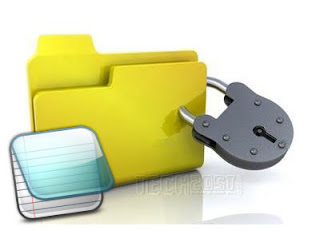Everyone of us have some private files on our PCs which we do not want others to access them. Some hide those files on computer and some others use software to simply password protect them.
But using a software leads to many problems like:-
getting system hang
also when we format our system the software will be removed automatically which causes your protected files to be unhiiden and go public.!!
So , it is good to password protect a file on computer using a simple notepad trick by using .BAT extension.
But using a software leads to many problems like:-
getting system hang
also when we format our system the software will be removed automatically which causes your protected files to be unhiiden and go public.!!
So , it is good to password protect a file on computer using a simple notepad trick by using .BAT extension.
- Open Notepad and paste the following program in the notepad.
cls
:End
@ECHO OFF
title Folder Locker
if EXIST “Control Panel.{21EC2020-3AEA-1069-A2DD-08002B30309D}” goto UNLOCK
if NOT EXIST Locker goto MDLOCKER
:CONFIRM
echo Are you sure u want to Lock the folder(Y/N)
set/p “cho=>”
if %cho%==Y goto LOCK
if %cho%==y goto LOCK
if %cho%==n goto END
if %cho%==N goto END
echo Invalid choice.
goto CONFIRM
:LOCK
ren Locker “Control Panel.{21EC2020-3AEA-1069-A2DD-08002B30309D}”
attrib +h +s “Control Panel.{21EC2020-3AEA-1069-A2DD-08002B30309D}”
echo Folder locked
goto End
:UNLOCK
echo Enter password to Unlock folder
set/p “pass=>”
if NOT %pass%==yimcooldude goto FAIL
attrib -h -s “Control Panel.{21EC2020-3AEA-1069-A2DD-08002B30309D}”
ren “Control Panel.{21EC2020-3AEA-1069-A2DD-08002B30309D}” Locker
echo Folder Unlocked successfully
goto End
:FAIL
echo Invalid password
goto end
:MDLOCKER
md Locker
echo Locker created successfully
goto End
- In the above program I am using yimcooldude as the password of the file.
- Replace it with anything you like to make it as folder password.
- Save the file anywhere in the system with a .bat suffix like something.bat
- Here I am saving it as mylocker.bat on my system.
- Double click on the something.bat file which you create, a new folder by name Locker will be created on the same location of bat file you saved.
- Copy your files to this folder and open bat file again and type y and then enter to lock your folder.
- To unlock your file again, you need to open the bat file and enter your password.

